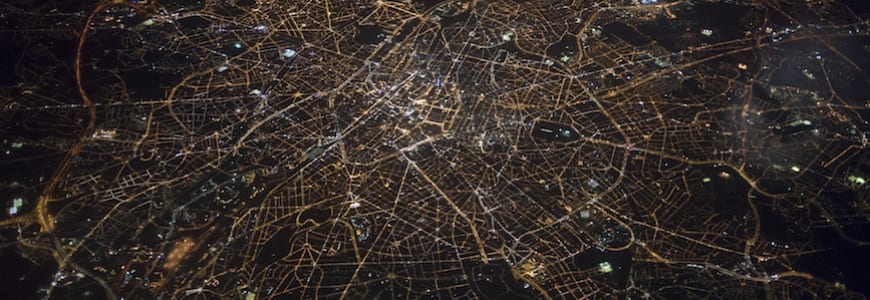By Rob Mitchum // March 9, 2016
For several years, “smart cities” has been a popular buzzword for applications of data, computation, and technology in an urban setting. So far, the movement has achieved some early successes, such as open data portals and increasing use of predictive analytics from city governments across the country. But these efforts are just the first small step towards the full potential of new technologies to improve cities and the lives of their residents.
In February, a working group assembled by the President’s Council of Advisors on Science and Technology (PCAST) released their report on this promising area of research and policy. In it, the assembled academic researchers, city officials, and business professionals highlight the brightest examples of urban technology, and make several recommendations for how the federal government can further nurture its growth. Among the 20 authors of the report was the CI’s own Charlie Catlett, director of the Urban Center for Computation and Data (UrbanCCD), and UrbanCCD projects appear as model initiatives.
Today, over 80% of the US population lives in large metropolitan areas, and the outward flow from city to suburbs of the late 20th century has reversed. But this resurgence also creates “complex and persistent urban challenges,” the report states, including aging infrastructure and the effects of climate change. Fortunately, cities are increasingly using data and technology on a variety of urban fronts, including energy, transportation, economic development, public safety, and health.
One shining example of this current activity offered by the report is UrbanCCD’s Array of Things urban sensing project, which will deploy sensor nodes to monitor air quality, weather, and traffic. Other initiatives highlighted by the report include Los Angeles’ partnership with route-finding app Waze to direct emergency management and city service vehicles, and New York City’s use of data mining to predict properties at higher risk of fire.
However, not every city has the personnel or resources to undertake such ambitious projects, and it would be redundant and wasteful for multiple cities to independently develop similar technologies. One of the most intriguing recommendations of the report proposes a solution to this dilemma in the form of CityWeb, “a platform for collaborating with each other and all relevant stakeholders, sharing results, insights, and best practices.”
In essence, CityWeb would function like an “app store” for city applications, enabling the sharing and replication of technologies and approaches developed in one locale across multiple cities. For instance, a predictive analytics algorithm developed by Chicago to predict food safety violations could be accessed by another city government and used on their own local data. The report also points out that a shared platform would help combine data across multiple cities and stakeholders, fueling new urban research projects and the development of even stronger, more generalized algorithms.
The report also recommends that new urban technologies are tested out in subsets of cities called “Urban Development Districts,” areas or neighborhoods that can serve as “living laboratories” for implementing new ideas and testing their efficacy before expanding. Cities can roll out technologies such as autonomous vehicles, smart microgrids, or urban farming in communities of various sizes and carefully assess their impact on traffic, parking, walkability, energy demand, access to healthy food, and other measures.
The authors stressed the urgency of federal funding and coordination for urban technologies, pointing to similar efforts already underway internationally. And with urbanization rapidly increasing around the globe, the potential impact of successful new uses of data and technology grows exponentially. In an accompanying blog post, working group co-chairs Mark Gorenberg, Craig Mundie, and Eric Schmidt, with executive director Marjory Blumenthal, highlight this current moment of opportunity.
“A new era of city design and city life is emerging. If the United States steers Federal investments in cities in ways that foster innovation, the impacts can be substantial. The rest of the world has also seen the potential, with numerous cities showcasing different approaches to innovation. The time to aim for leadership in urban technologies and urban science is now.”

